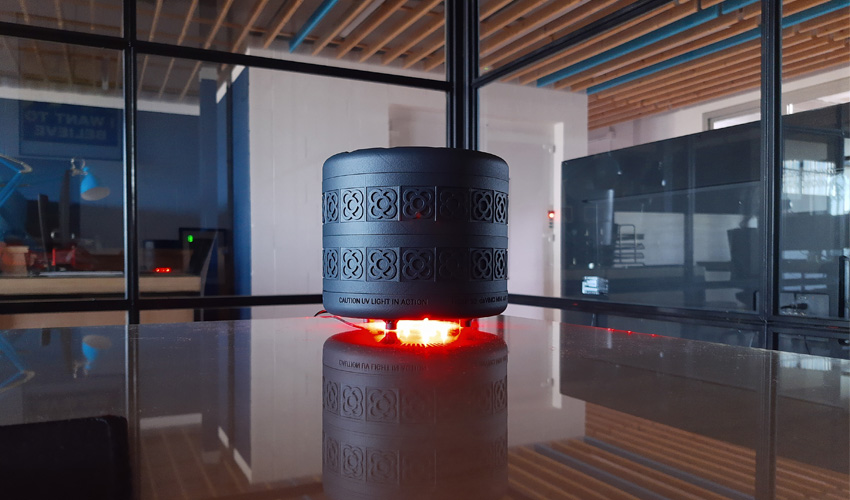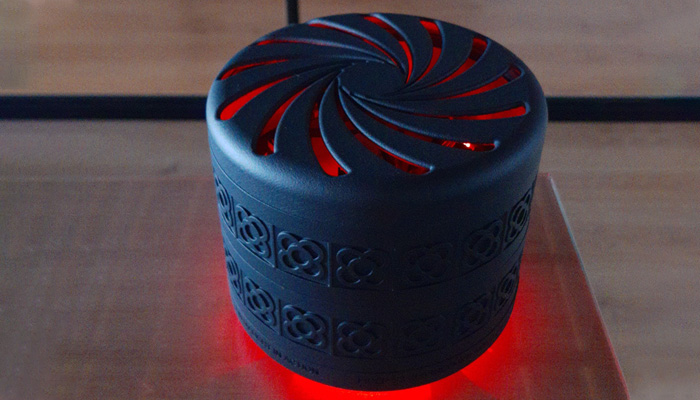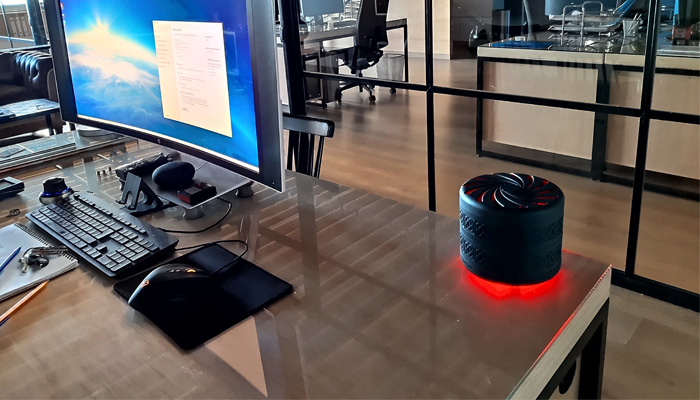AMS mini, a 3D printed device capable of eliminating airborne viruses

The seriousness of the current health situation has led many companies to seek and develop initiatives to curb the spread of the virus as much as possible. Winsun is a perfect example of this, with the creation of small 3D printed isolation rooms to stop the coronavirus pandemic. The industrial engineering company FICEP S3 has also used additive manufacturing to design a device capable of sterilizing the air to rid it of bacteria and micro-organisms that may exist, including airborne droplets that may contain the COVID-19 virus. Called AMS mini, it is compact enough to be applied in many spaces such as hotels, offices, factories, laboratories or even hospitals.
FICEP S3 is a Spanish company created by a group of engineers with extensive experience in the industrial world, whose aim is to obtain solutions and innovations through the use of the latest technologies. Initially, this modular air management device was designed to dry paint; it has been adapted in a more compact format to respond to the health crisis. The AMS mini project was achieved in part through additive manufacturing, specifically through HP Multi Jet Fusion technology and the use nylon (PA12). The company FICEP S3 also states that it is working on another project with the company KUVA to develop a respirator accessible to sub-Saharan countries.

The AMS mini device is capable of cleaning the air
Operation of the AMS mini and elimination of COVID-19
This invention could reduce the expansion of COVID-19 which, although transmitted in most cases by the projection of droplets from sneezing for example, scientists believe it remains in the air for some time in special cases. According to the World Health Organization (WHO), there are indeed specific circumstances in which droplets containing coronavirus particles can remain in the air for up to three hours on average after being expelled. Aerosols are particles less than 5 micrometers in diameter that result from the evaporation of larger droplets. They can remain suspended in the air depending on the heat and humidity of the environment and can be transmitted over distances of more than one metre.
In order to operate efficiently, the AMS mini has retained the UV light of the original model – this is normally used to cure certain types of paints and epoxies. Here, it changes the air directly indoors. AMS mini incorporates a cyclic system, which forces the air to stay in the unit for as long as possible to ensure that it is sufficiently exposed to UV light before coming out from above. With this method, the company claims that about 95 per cent of bacteria and viruses in the environment are eliminated, including COVID-19 aerosols. The wavelength system designed is 200-400 nanometres, so the air would be sterilized without sacrificing efficiency.

The device can be used in many environments
Why use 3D printing?
Additive manufacturing was involved in the creation process of the AMS mini for several reasons. The first is that the device has a complex geometry that separates the filtration stage from the rest of the device. This is where there is a sort of fixed turbine that determines the direction of rotation and the angle of the air, previously filtered, between the inner wall and the outer structure that contains the conduits for the wiring of the upper stage. The geometry is fundamental to correctly generate the speed flow and the direction of rotation. This would be impossible to obtain using a mold.
Finally, 3D printing will enable the device to be personalised according to the environment in which it will be used: it can be adapted according to the decoration of the premises. The development of the AMS mini would therefore offer the possibility of purifying the air in spaces that currently risk containing aerosols containing COVID-19 particles. You can find more information on FICEP S3 HERE.
What do you think of the APS mini as a device to clean the air of COVID-19? Let us know in a comment below or on our Facebook and Twitter pages! Don’t forget to sign up for our free weekly Newsletter, with all the latest news in 3D printing delivered straight to your inbox!






